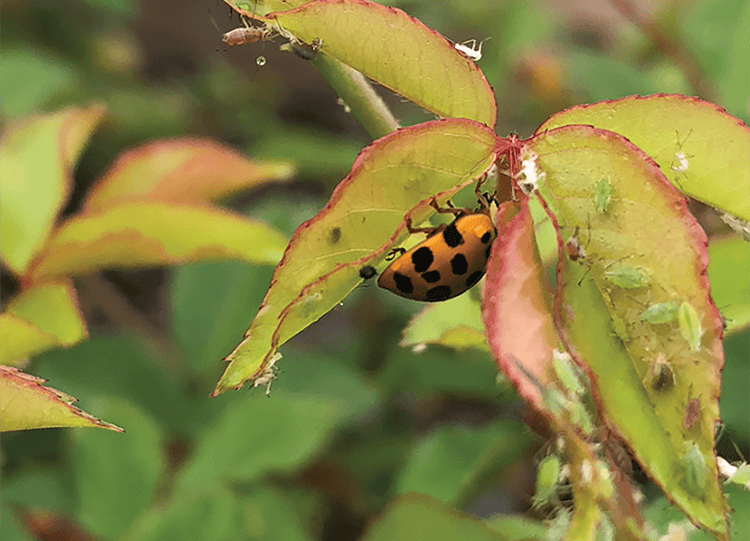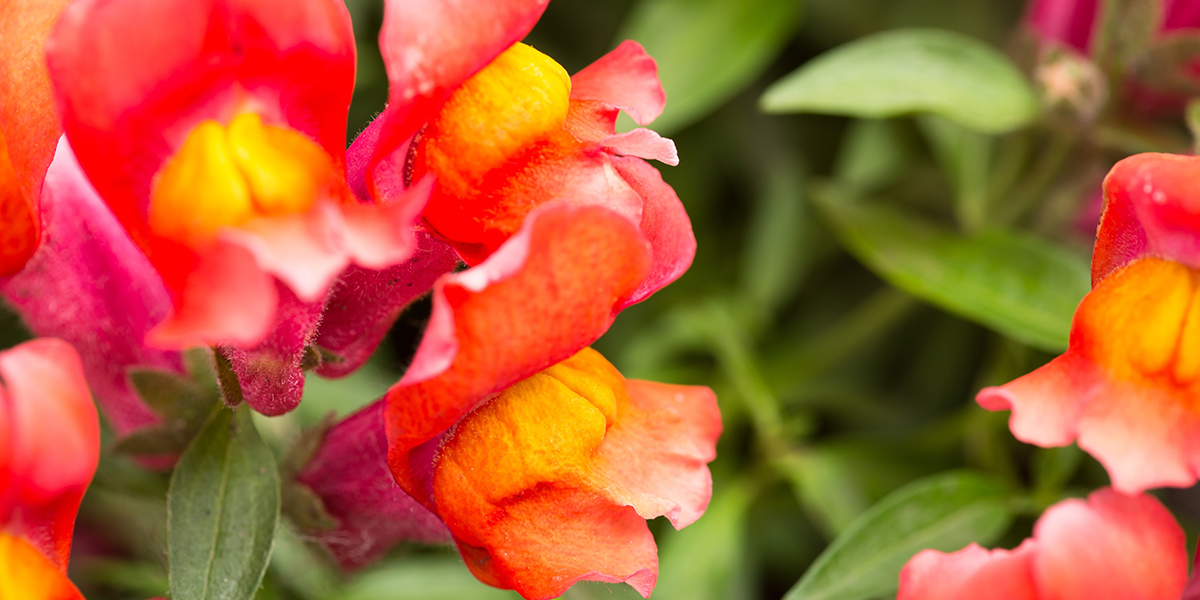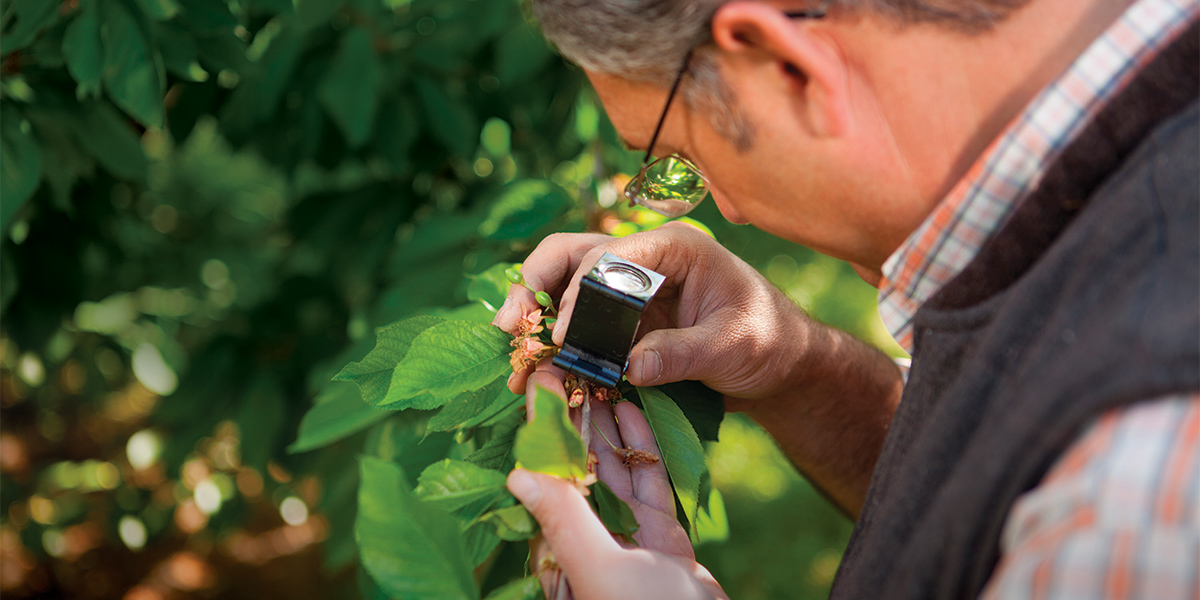Biological Basics
To get started with biologicals, greenhouse growers should develop a comprehensive IPM program and seek practical and reliable advice.
Biologicals have a broad definition. According to BASF's Leah Van der Heide, they are the “use of any living organism to complement your pest management program.”
“The term ‘biologicals’ is broad and can refer to microbial organisms, all the way up to macro organisms,” Van der Heide, who was an IPM Technical Specialist for a biological control company before joining BASF, says. “So that could be anything from entomopathogenic fungi, like Beauveria bassiana, to predatory insects, mites, and parasitoids. Using biological controls in a pest program involves the strategic release of these organisms in a growing area.” Parasitoids, Van der Heide says, are just insects that parasitize other insects in order to complete their life cycle.
“Most of the time, growers who consider implementing biologicals into their production do so because they need to. These growers have recognized that they are no longer achieving ideal control of a pest by using previous management methods, specifically broad-spectrum conventional chemistries alone,” Van der Heide says. “The lack of control they are seeing is usually due to pesticide resistance within their pest population, which is, of course, accelerated by over-application and failure to rotate MOAs. Ultimately, growers who are dealing with resistance have no other option but to start exploring IPM techniques that include biologicals and other approaches that may be missing from their program.”
Although some are turning to biologicals “later in life,” biologicals should not be considered a last resort. Biological control is just one part of an overall approach to pest management. Both the success and the failure of biologicals is influenced by the success and failures of all other practices.
“In order to successfully implement biologicals, you must be fully committed,” Van der Heide emphasizes. “Understand that biological control is not something you can learn overnight. Just like growing a successful crop, it will take time and dedication. There may be some early small failures followed by recoveries; the final product is really beautiful.”
What to know before starting a biological program
Jen Browning has worked for BASF for almost a decade and a Bachelor’s degree in horticulture and a Master’s in entomology from Oregon State University; she also taught entomology at her Alma Mater. At BASF, she has done work to develop and troubleshoot insect and mite management programs in ornamentals, and she has a passion for IPM.
According to Browning, biologicals will have to change with the seasons, crops, and production years. Success requires a willingness to be flexible with the approach and to alter course when needed.
“It’s a dynamic system in your production,” she says. “It’s not something you deploy and get the same results each time. It won’t be the same every year. It’s like growing a crop. You stick with it, commit and invest the time and seek out the resources you need to be successful.”
Both Browning and Van der Heide recommend seeking out advice from experts and other growers when starting out.
“One thing we think is really important when seeking help is to find someone without a rigid agenda,” Van der Heide says. “So, someone who is all-in on biologicals and thinks that you should never use any conventional chemistry again, that’s an approach that’s not going to be helpful to you. They are going to teach you a lot about biologicals, but they are going to steer you in a very narrow direction.”
They note that the same is true for someone who is all-in on conventional chemistry.
“If you can find someone who embraces and really believes in the integrated approach — someone who sees the value of all branches of IPM and doesn’t have a rigid agenda — they are going to help you create a successful program,” Browning says.
To find the right person for that role, Browning and Van der Heide both suggest doing research and seeking out reliable sources. Reach out to industry experts. Don’t hesitate to lean on your professional contacts to help in your search for a resource. Van der Heide notes specifically that fellow growers who have found success with biologicals can serve as a valuable resource when starting to utilize biologicals.
“There are many factors that can affect the efficacy of biologicals, but particularly environmental factors,” she says. “If you can connect with a grower close by, or in the same region as you, who is utilizing biologicals in their production and having success — they will serve as a good resource, someone who you can learn from.”
Putting it into action
It’s not that sexy: evaluating your overall greenhouse sanitation, as well as having a robust sanitation plan, is an important place to start.
“Good sanitation goes a long way towards helping bios be successful,” Browning says. “You should already be practicing that even if you’re using mainly traditional chemistry, but you’ll notice a difference with your bios when you are proactive about things like next level greenhouse weed management and entry controls.”
The next step is taking a careful look at “go to” chemistry. Browning advises growers to re-think the relationship with broad-spectrum products; now the conventional chemistries in your program will need to work alongside some beneficial insects and the broad spectrums will be reserved for certain seasons or situations. “Growers will need to identify the targeted insecticides and miticides they want to use, preferably ones that are compatible with beneficials, and prioritize those in the program,” says Browning.
“Basically, the chemical program is restructured to move your broad spectrum insecticides to the back line and targeted products to the front line: plan for targeted chemistries first and broad spectrums as rescues,” Van der Heide adds.
“Some people have been slow to adopt more targeted chemistries and stayed with broad-spectrum options because it relieves you of the pressure of selecting products with more narrow spectrums,” Van der Heide says. “As you start thinking about going to biologicals, now is the time to go through the new innovations and decide which targeted chemistries work for you, because ideally, the products you choose will work nicely alongside your biologicals and will actually enhance their performance in controlling the target pest population.
Two examples of selective products from BASF would be Ventigra® insecticide that targets piercing-sucking insects or Sultan® miticide that targets spider mites. Both of these products are compatible with beneficials. There are also offerings available that combine biologicals with specific chemistries that allow growers to use both approaches in a single formulated product.
Take-home message
So, what is it about biologicals that makes them “funky”? Both Van der Heide and Browning say that, while there are a handful of common ways that can cause biologicals to fail, there are a bunch of wild, unique ways growers have invented to be successful running biologicals. Want to set up a rearing chamber in plastic containers under your desk? Go for it! Establish some breeding colonies of predators in your coat closet? Why not! Protect those nematodes during the winter by stashing them in your Yeti Cooler while you wait for the spray water to come up to the proper temp? We're not going to stop you!
The point is this: biologicals are fun! There’s no reason to feel intimidated or scared about implementing them into your production. If you currently use mostly traditional chemistries, and your pest pressure is fairly low, at least some of the time, then you’re good at your job. Those same skills and practices you’ve already mastered are the same ones that will help you succeed with biologicals.
“If a grower is already good at record keeping, if they manage fertilizer and water needs properly throughout their crop, if they already make careful applications of pesticides and PGRs, then that grower is in good shape for this undertaking,” Browning says. Start exploring biologicals and integrate your approach today.
*Always read and follow label directions. Sultan and Ventigra are registered trademarks of BASF.
Related





